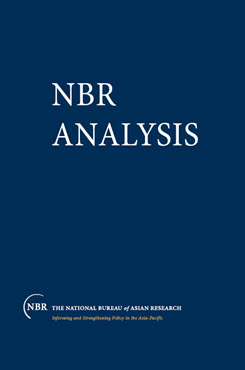South Asia
Hotbed of Islamic Terrorism
This paper explores the rising menace of Islamic extremism in South Asia while discussing key terrorist groups and networks and emerging terrorism trends.
South Asia has been confronting the challenge of Islamic extremism [1] for many years. At least four South Asian countries—India, Pakistan, Bangladesh, and, most recently, the Maldives (each with large Muslim populations)—are considered hotbeds of Islamic terrorism. In both Pakistan and Bangladesh, radical Islamic forces aim to establish Islamic states based on Islamic laws. This region has the highest concentration of Islamic jihadist [2] groups in the world: a rough estimate is that nearly one hundred Islamic extremist groups and jihadi organizations with crossborder linkages are operating with impunity throughout South Asia. [3] India tops the list with more than 50 active or dormant terrorist tanzeems (organizations). [4] Several anti-India and anti-Hindu Islamic groups fighting in Kashmir are based in Pakistan or Bangladesh. Many of these groups have ties with international jihadi organizations based in Pakistan, Afghanistan, and Uzbekistan, including al Qaeda, the Taliban, and the Islamic Movement of Uzbekistan (IMU).
This essay explores how South Asian countries, in particular India, Pakistan, and Bangladesh, are grappling with Islamic extremism, especially since the catastrophic events of September 11. This essay identifies major terrorist groups and discusses intricate terror networks, their operational developments, and emerging terrorist trends in three country-specific sections. Despite concerted efforts by government forces, including the U.S.-led campaign in South Asia, Islamic terrorism is on the rise, with a new generation of terrorist leaders taking the reins of jihad in their hands throughout the region. The essay also finds that South Asian terrorist groups increasingly prefer to work collectively, even when there is little ideological convergence among their objectives.
Pakistan’s Jihadi Landscape
The jihadi landscape in Pakistan is diverse and dynamic. Although many groups have recently decentralized, operating independently by holding swathes of specific territories, others have formed umbrella groups primarily to fight Pakistani and U.S.- led security forces. The Baitullah Mehsud–led Tehreek-e-Taliban Pakistan (TTP) is one such umbrella group.5 The TTP, which has been blamed for the assassination of former Pakistan prime minister Benazir Bhutto and for waves of suicide attacks in the country, came into existence when various local Taliban outfits joined forces. These groups shared the common objectives of implementing sharia, (Islamic law) and waging jihad against U.S.-led forces. The Tehreek-e-Nafaz-e-Shariat-e-Mohammadi (TNSM), another pro–Sunni Wahhabi outfit, holds a similar goal of enforcing sharia in Pakistan. Under Maulana Fazlullah’s leadership the TNSM has been able to run a parallel government in the Swat region. The Pakistan government…
[1] The phrases “Islamic extremist” and “Islamic terrorist” are used here to describe those who follow a path of violence, favoring extreme religious interpretations of the Quran and its tenets.
[2] Jihadists practice and adhere to extreme forms of Islam, often resorting to violence against “unbelievers” to achieve the ultimate goal of establishing the rule of God on earth. For more details, see Mary Habeck, Knowing the Enemy: Jihadist Ideology and the War on Terror (New Haven: Yale University Press, 2006); and Michael G. Knapp, “The Concept and Practice of Jihad in Islam,” Parameters 33, no. 1 (Spring 2003): 82–94.
[3] For a list of terrorist organizations by country, see the South Asia Terrorism Portal at http://www.satp.org. For a list of the 31 Kashmir-based outfits, see K. Santhanam, Sreedhar, Sudhir Saxena, and Manish, Jihadis in Jammu and Kashmir: A Portrait Gallery (New Delhi: Sage Publications, 2003).
[4] These organizations are mainly based in Jammu and Kashmir (J&K), Assam, Manipur, and Tamil Nadu.


